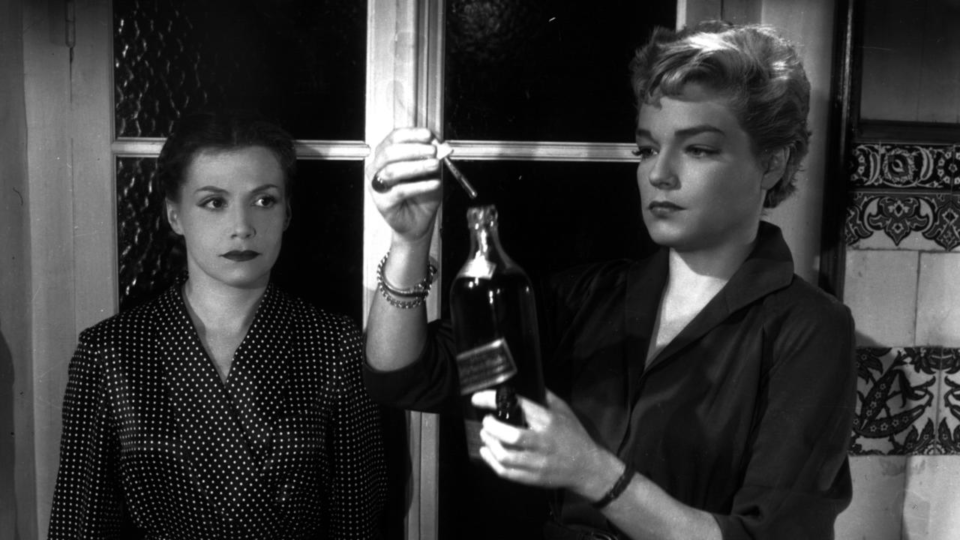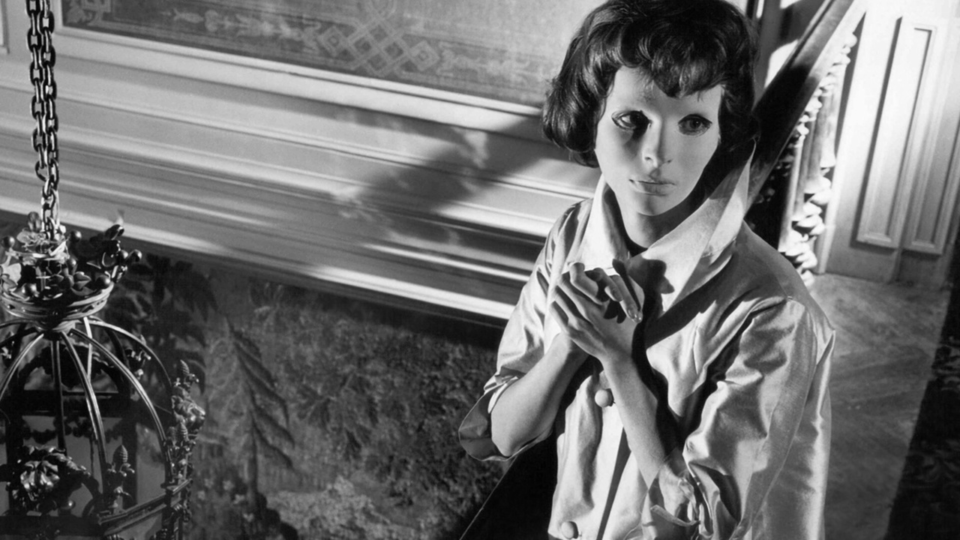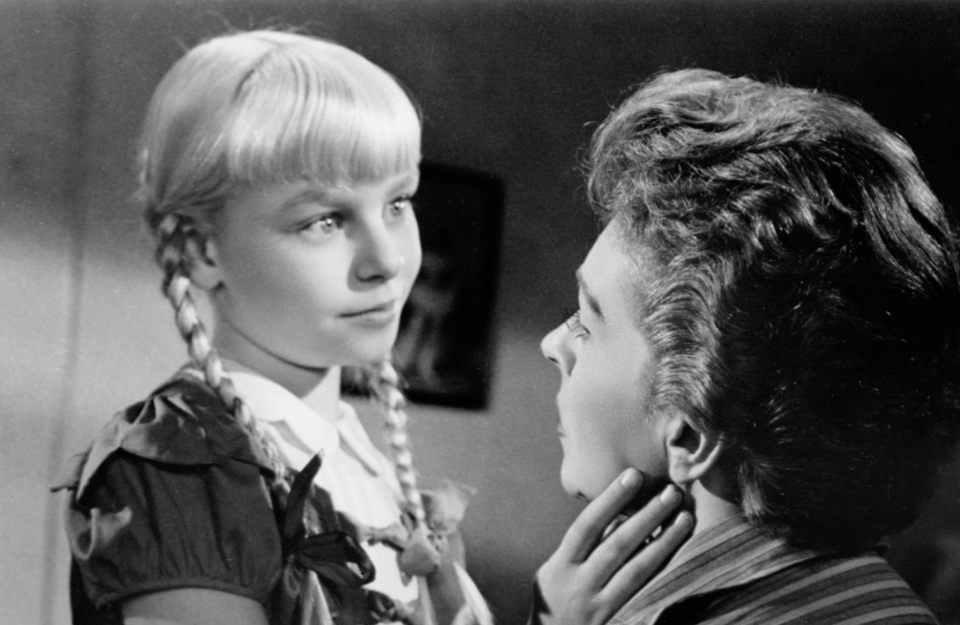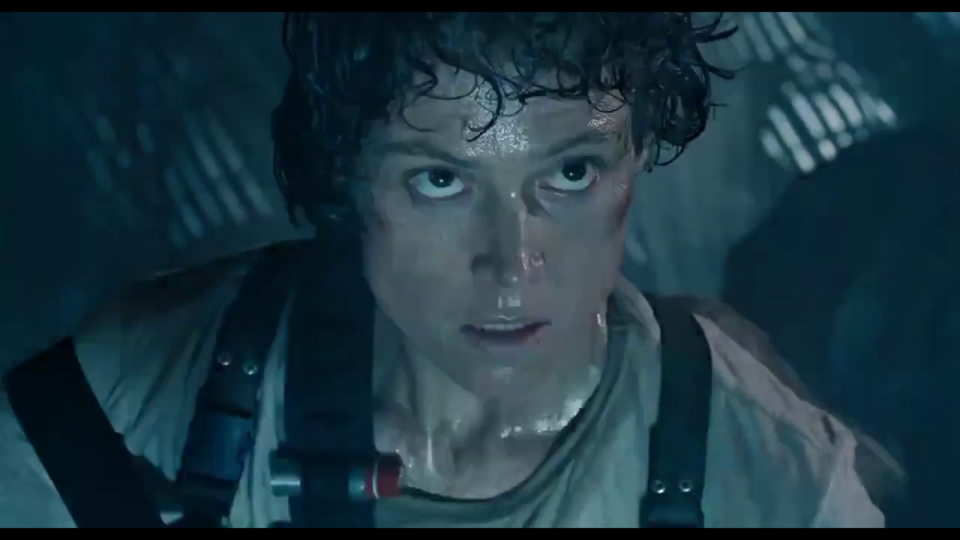Measure for Measure: Slow-Burn Revenge Horror and the “Hidden Monster”

Vengeance. Retribution. Justice. When dropped into the horror, it can become a glorious blend of terror, delirium, and equity that supersedes any twisted ankle run from a slasher. And the seeds of revenge can take root with little to no tending and erupt as quietly or as firmly as we need them to. Sometimes the quietest rage and vengeance bring to light the monster that lies within all of us and that vengeance in the hands of women makes it even sweeter.
Revenge has seeped into horror’s many subgenres with pinpoint precision, from The Omen to Poltergeist to The Lodge. To prove that slow-percolating rage and revenge never go out of style, let’s go back to those classic revenge narratives that inspired and launched a thousand horror films that show beyond a shadow of a doubt, you can’t have a full-out rage without starting a slow burn.
Not all revenge is hostile out the gate, so let’s start the revenge meter at 3 beginning with the anxiety-inducing subgenre, Paranoia Horror.
Les Diaboliques (1955)
The wife and mistress of a tyrannical boarding school principal join forces to murder him and get away scot-free. This near-perfect film is a brilliant cat-and-mouse game with a cat that has a penchant for mind games. You want to feel sorry for the wife at the beginning. Her husband is a tyrant, an Alpha in all the worst ways (are there good ways?). And you do feel bad for the most part, until her lopsided friendship with his mistress comes into play. Now you’ve got a trio worth messing with.
Mild-mannered and perpetually ailing Christina Delasalle (Véra Clouzot) manages the run-down boarding school where she also teaches under the thumb of her horrible husband and principal, Michel (Paul Meurisse) who constantly flaunts his extra-marital relationship with Nicole Horner (Simone Signoret), a fellow teacher. In what you think would be an unending adversarial relationship between these two women, the duo surprises the audience by banding together in a murder plot to kill Michel who has been emotionally and physically abusive to both.
After carrying out the murder to look like an accident, the two women are horrified when his body is never recovered. Whisperings of him being seen at the school, send both women, especially the woeful Christina, into a tailspin. After seeing in the paper that Michel’s corpse has been found, Chrsitina heads down to the morgue to identify him and is more than disappointed that it’s not actually Michel. Womp, womp. But instead of leaving quietly as the grieving widow, Christina speaks with a private detective who has now become intrigued with the case. Nicole ain’t happy. The plan, originally her idea, is now in the bin because the police have now ruled his death suspicious.

We now have three different paths made: Nicole’s revenge is set on Christina for yapping to the police, Christina is seeking revenge on Michel for not being dead and both Nicole and Michel sought revenge on Christina for, well, being alive. You would think one revenge plot would be enough for a film but the slow infuriation, anxiety, and rage that accumulate to its fantastic climax give us a sweet glimpse into slow-burn revenge horror. The twist here is absolutely terrific, and even if you spoil it for someone (I won’t). It’s such a joyous mindfreak of a film. Les Diaboliques is a great showcase of how revenge can best be served cold, wet, and seemingly reanimated and can be summed up in the modern adage of “throw the entire man away.”
Les Diaboliques’ influence of the twist and turn of betrayal, terror, and extreme paranoia can be found in contemporary films like What Lies Beneath (2000), The Visit (2015), Martha Marcy May Marlene (2011) and The Gift (2015). Diabolique (1996) with Sharon Stone, Chazz Palminteri, and Isabelle Adjani falls short with the scares and unnerving undertone of the original but is still worth the watch.
Turning the slow-burn revenge dial up to 5 with Body Horror.
Eyes Without A Face (Les Yeux Sans Visage) (1960)
A plastic surgeon causes an accident that leaves his daughter disfigured and goes to great lengths to rectify it. Another French horror, Mo? Yes.
Le Doctor Génessier (Pierre Brasseur) isn’t winning father of the year anytime soon to his daughter, Christianne (Edith Scob). While disfiguring her in a horrific accident, he works to appease her by giving her a new face by nefarious means by slaying women who look like her and stealing their faces for transplant. We’re led to believe that Génessier’s motivations lie solely in guilt and the love of his daughter but as the bodies start racking up, so does his God complex that’s fully supported by Louise (Alita Valli), who incidentally helped him fake Christianne’s death in addition to supplying the ill-fated women.

Christianne is a ghost in her own life. She’s not to be seen or heard from, completely shadow bound in a hardened white mask. She’s alone and confused and beginning to slowly meld and take comfort, almost solace, in that mask. And her mental state unravels quickly as anyone’s would, as her soul, mind, and body are in limbo. She plunges off the deep end completely as it’s revealed to her what her father has been up to. No plan has been made to reintroduce Christianne to society once the operation is a success or any check-ins of how her mental and emotional state are dealing with being “off the grid”.
I adore the slow-burn revenge that takes place within her. She’s angry and dejected, used as an experiment as her father plays the self-appointed proxy and she deals with Louise deftly but doesn’t lay a finger on her father, rather letting nature, and some teeth, deal with him as she walks off into the proverbial sunset, instilling the fact that you can’t fix something that has grown accustomed to being broken. It would cheapen it, I feel, if there had been an elaborate offing of ol’ daddy and that’s where Christianne’s power lies, by letting karma take hold.
Eyes Without A Face’s disfigurement and surgery premise as well as body-swapping seeps into contemporary films like Body Parts (1991), The Skin I Live In (2011), Possessor (2020), Goodnight Mommy (2014). You can spot some traces in Sleepaway Camp (1988) and even Get Out (2017).
Sliding up to 6 on the slow burn revenge meter into Creepy Kid territory.
The Bad Seed (1956)
When a rival classmate dies in an accident at school, eight-year-old Rhoda Penmark is believed to be responsible. In a quest to maintain Rhoda’s innocence, her mother Christine uncovers the deadly truth. Banner addition to the “So, Your Kid’s a Killer” trope, the film wastes no time showing us what a sociopath Rhoda is. Plus, the atrocious discoveries her mother unearths come as a double whammy.
I absolutely adore horror that delves into Creepy Kid territory and Rhoda Penmark (Patty McCormack) gives it to us in spades. Clearly furious about losing out to a fellow classmate, Claude Daigle for a contest medal, Rhoda hints at making sure that’s rectified immediately. So when this classmate comes up dead, Christine (Nancy Kelly) shrugs it off as Rhoda simply being a sore loser and a horrible coincidence. That is, until Claude’s drunk and grief-stricken mother Hortense (Eileen Eckhart) confronts Christine, casting doubt about Rhoda.

As Christine discovers more about Rhoda’s connection with Claude’s death—her being the last to see him alive, her tap shoes leaving imprints on his body and the sought-after medal now safely tucked in her treasure chest—she quickly plays cover-up.
Christine’s guilt festers and her mental health struggles to hang on as Rhoda’s body count grows. What unfolds quickly is a hereditary homicidal reckoning. Rhoda is an excellent vengeance character albeit disturbing as hell. She simply feels that she is righting the wrongs done against her and she deals with them swiftly, without reassessment. She doesn’t like to be crossed and doesn’t like to be trifled with and Christine takes great blame for that.
Patty McCormack’s incredibly eerie take on Rhoda is so unnerving and Nancy Kelly gets a bit over the top in hysterics, but this film is so remarkable in its characters and theme. The end credits will leave you questioning the true outcome of the film but it’s a hell of a Creepy Kid revenge ride that’ll have you looking up the rules of your child’s next contest. Finding a loophole is a lot easier than sitting in a pink electric chair. What’s so disquieting about this genre is the loss of innocence and the potential for child death in the film, making this subgenre a bit sticky and sensationalized at once.
Giving a huge nod to incredible classic films like Children of the Damned (1960) and Brava’s Kill, Baby, Kill (1966). Most famously in the franchise space, Halloween (1978) and Children of the Corn (1984) with the gulp-inducing creep factor. Banned film Mikey (1992) is absolutely brutal, The Good Son (1993), The Ring (2002), Orphan (2009), and The Lie (2018) both feature Peter Sarsgaard who apparently loves Creepy Kids.
Dialing up the slow burn revenge to 8 with Sci-Fi Horror…
Aliens (1986)
As the sole survivor of the USCSS Nostromo (alongside trusty feline Jonesy), Ripley (Sigourney Weaver) is rescued by a salvage vessel and placed in a medical bay for recovery. Her crew has been killed, her ship destroyed, her story rejected, her mental stability tested and in the extended version, her daughter Amanda grew old and died of cancer as she waited for her to come home.
Flash forward to evil Burke, representative of Weyland-Yutani (her employers), the crew of ship Sulaco, and Ripley heading back to war-torn and abandoned planetoid LV-426. Ripley is seen here as “Snow White”, as described by a dismissive Private Vasquez. The soldiers don’t believe she’s seen combat much less an alien lifeform and they treat her accordingly. The addition of an android on board makes her angry and uneasy. Being betrayed and almost killed by one will do that to you, I suppose, so she’s screaming into the void for acknowledgment. Her entire crew was annihilated and she battled an acid-spitting lifeform for God’s sake, what more do you want from her?
Again she’s in the position of having to fight to be believed and at the very least respected and as all hell breaks loose and the crew begins to drop like flies, Ripley is finally given the benefit of the doubt when they could’ve just listened to her to begin with. They come upon the sole survivor in Newt (Carrie Henn), a young child and Ripley becomes her protector.

In a fight to the death, it’s mother against mother with Ripley fighting against the Queen Xenomorph in one of the most kick-ass front-loader fight scenes ever. I can name no other front-loader fight scene, so you’ll just have to believe me. Avenging her crew’s deaths, her own innocence, and protecting Newt’s life and the life of the human race all reside in the resolve of one woman. It’s a familiar enemy and she’s using a familiar kill shot: the airlock, assuming this species cannot withstand those space temps and lack of air. It’s a set-it-and-forget-it approach because as we see, we’ve spawned (pun intended) a franchise. But still, Ripley gets her revenge and in some ways albeit proverbially, saves her daughter making that revenge incredibly sweet.
Spawning more Sci-Fi Monster films like Predator (1987), Pitch Black (2000), and Mimic and Event Horizon both in 1997, nothing has come close to this level of unremitting revenge from a female lead in a Sci-Fi Horror and its underlying themes of lack of bodily autonomy and the lack of control over a birthing form, no matter how monstrous, isn’t lost on us.
Let’s dial it all the way up to 10 with the sweetest revenge in Paranormal form.
Carrie (1976)
A friendless teenager, raised within her mother’s strict religious upbringing, unleashes her telekinetic powers after she is bullied by her classmates at school. Let’s face it, bullies are absolute jerks and in a time in the 70s when bullying was very hands-on, Carrie showcases the lengths those bullies would go to, to shame, humiliate and denigrate. It also shows the lengths Carrie White will go to belong. Belonging is such a basic human need, being liked is a close second and Carrie has neither, so any semblance of kindness, she clings to it, to disastrous circumstances. Carrie is hands down one of my favorite revenge films.
Carrie White (Sissy Spacek) is sheltered, and unsure and made the butt of jokes by most of the kids at school, especially Chris Hargenson (Nancy Allen) who takes great pleasure in humiliating her. The film opens with a visceral scene so crushing it’s hard not to relate to her and Carrie is so stricken, her terror shatters a light bulb. When Chris’s friend Sue feels guilty over Carrie’s mistreatment, she enlists her boyfriend Tom (William Katt) in extending Carrie an invitation to the prom…which nobody asked for.
The intervention of Miss Collins (Betty Buckley), the PE teacher, is the only real “mothering” Carrie has. She’s gentle and caring, something Carrie is not exposed to at school or at home and she sees right through the scheme and is instantly protective. That doesn’t stop Carrie from planning her big night with Tom or stop Chris from planning an even more humiliating prank. She fashions a dress her mother Margaret (Piper Laurie) wickedly chastises, and we learn the basis for her fire and brimstone approach to Carrie’s upbringing.
As Carrie lays down the law that she is attending the prom no matter what’s said, it starts a chain of events that detonate. In a derisive gesture, Carrie and Tom are named King and Queen of the prom and as Carrie begins her thank you speech, she becomes covered in pig blood. Chris’s prank comes through, and Carrie’s rage erupts. As the body count rises within the school gym, it continues to the streets and eventually back home to Margaret.

What’s incredible about her revenge is that it begins untargeted, the entire gym is laid to burn, and even our fave Miss Collins bites it under a basketball post. But as Carrie gains more control over this rage she begins to harness it, flipping Billy and Chris’s car with a simple wide-eyed stare. Sissy Spacek’s facial work in this film is nothing short of extraordinary, and for such a young age to convey both turmoil and rage in the same expression and then fold into such regret and penance at Margeret’s feet is a complete acting clinic.
Much homage has been paid to Carrie’s vengeance in films like Friday the 13th (1980), Jennifer (1978), April Fool’s Day (1986) The Craft (1996), Urban Legend (1998), The Final (2010), and Let the Right One In (2022).
These films prove that there are many other ways to get mad and get even and that vengeance in the hands of women and girls brings many of those societal standards placed on them to light.
Female characters are mostly shown as hysterical and powerless in Paranoia Horror. But those retaliatory roles tug at our own internal panic and agitation, letting our nervousness build because we know we’d also stop at nothing to right our mental state or guise of innocence and for Nicole and Christina in Les Diaboliques, it’s a matter of life and death.
Body Horror pulls the focus inward, turning the mirror on our own loss of autonomy or agency of our own body (a war women have yet to win) and how life and circumstances can reduce us to mindless flesh-sacks and nothing more. For Christianne in Eyes Without a Face, her agency is under question, and repossessing that individuality is carnal.
These films take us back to defenseless times, where the many wrongs against us can never be made right no matter how justified or unjustified they are. Rhoda Penmark of Creepy Kid horror, The Bad Seed, becomes a silent banner for the sufferer, and the delicious power of retribution here is palpable and brings out the guts and violence we wish we had at the time of the offense.
Sci-Fi Horror drags us into the spotlight of how small and insignificant we are yet refuse to see. We’re in disbelief. Our reality is shaken and here in Aliens, we’re finding a similar lack of autonomy over the body as well as bits of the “hysterical and overwrought woman” trope. The sweetest revenge next to killing the Queen Xenomorph is the fact that if she’d just been believed the first time….
Within that longing for a sound reality and longing to be heard, Paranormal Horror begs us to believe in something outside of ourselves whilst still struggling with our own value of adequacy. Questioning our own humanity and presence, and burying the constant onslaught and admonishment of not belonging, like Carrie White copes with in Carrie, creates something unchallenged and ruthless and at times, unstoppable.
What’s lovely about these classic maps for revenge horror, drawn by this host of characters, is that they provide not only the audience but aspiring horror writers fodder for revenge films. Revenge can be anxious, martyred, solemn, quiet, condoned, ignited, and explosive, but it all starts with a slow burn.
Categorized:Black History Month 2023 Editorials News
